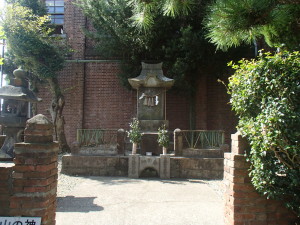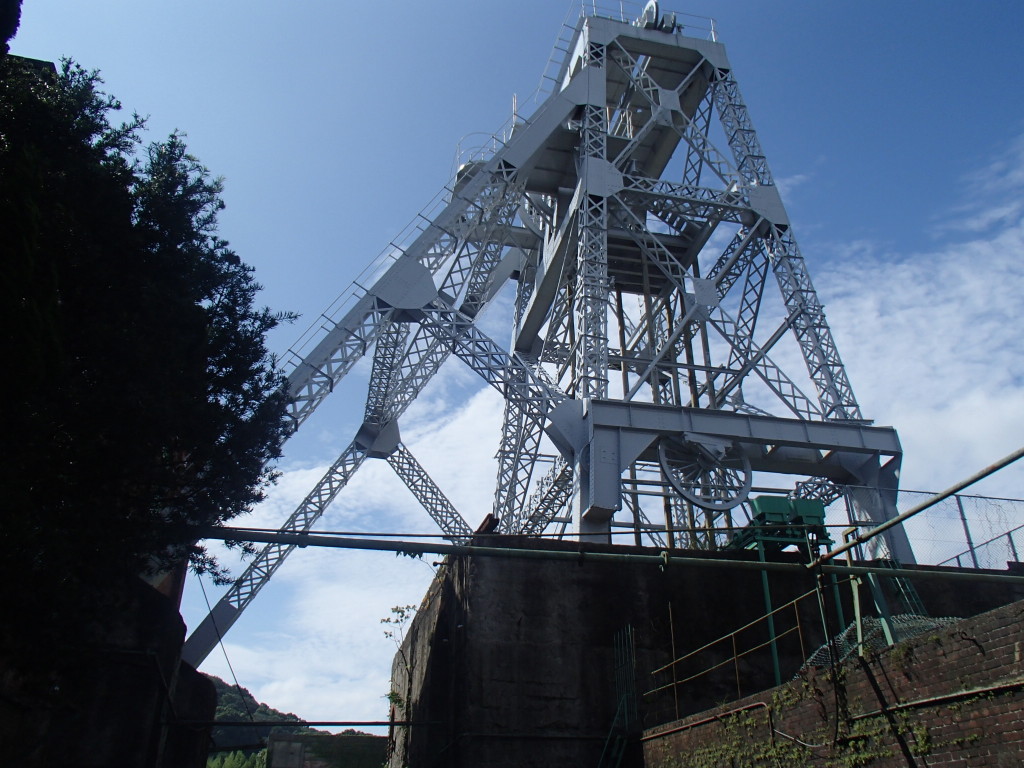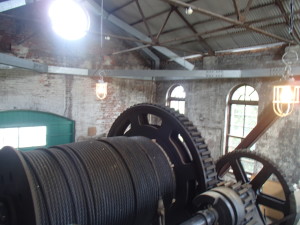The coal seam was discovered when a local farmer found ‘burning rocks’ on a hillside in the 15th century, coal was gathered by hand for generations until the Meiji restoration when western industrial technology and engineering techniques became available, the whole mine extended for 20 km underground and thousands of people including women and prisoners worked underground.
This July the mine became listed as one of Japan’s industrial heritage World Heritage Sites, despite some controversy over its treatment of prisoners of war who were sent to work there. Misumi West Port (Amakusa) and Miike port and coal mine industrial railway (Arao) are the other listed sites in the Kumamoto region.
 The site itself has had very little done to it, the very Victorian looking, abandoned red brick buildings are in disrepair, with old tools and machinary lying around. The only Japanese touch being the small shrine to the Yama no Kami – the mountain god – which every miner would pray to before entering the pit. You can enter several buildings though unfortunately you cannot venture down into the pit itself as it was filled in when the pit closed.
The site itself has had very little done to it, the very Victorian looking, abandoned red brick buildings are in disrepair, with old tools and machinary lying around. The only Japanese touch being the small shrine to the Yama no Kami – the mountain god – which every miner would pray to before entering the pit. You can enter several buildings though unfortunately you cannot venture down into the pit itself as it was filled in when the pit closed.Entrance to the pit area costs 410 Yen and there are guided tours available run by local volunteer guides, who do a great job of telling you about the history of the mine. There are a couple of guides who can speak English, however if they are not available ask for a Talkie pen from the visitor center. You use it to touch the various signs you will see around the site and can listen to an English, Korean or Chinese explanation. At the visitor centre you will find photos on display and there is also a short film on the history of the pit to see.
Arao is reachable by train from Kumamoto City.
9:30 a.m. to 5:00 p.m.
Closed:
Mondays (when Monday is a public holiday the mine will be closed the following day)
Admission Fees:
Primary and junior high school students: 200yen per student (groups of 20 or more, 160yen per student).
High School Students: 300yen per student (groups of 20 or more, 240yen per student).
Adults: 410yen per adult (groups of 20 or more, 320yen per adult).
Scheduled Tours: Free (please contact the mine for more details)


